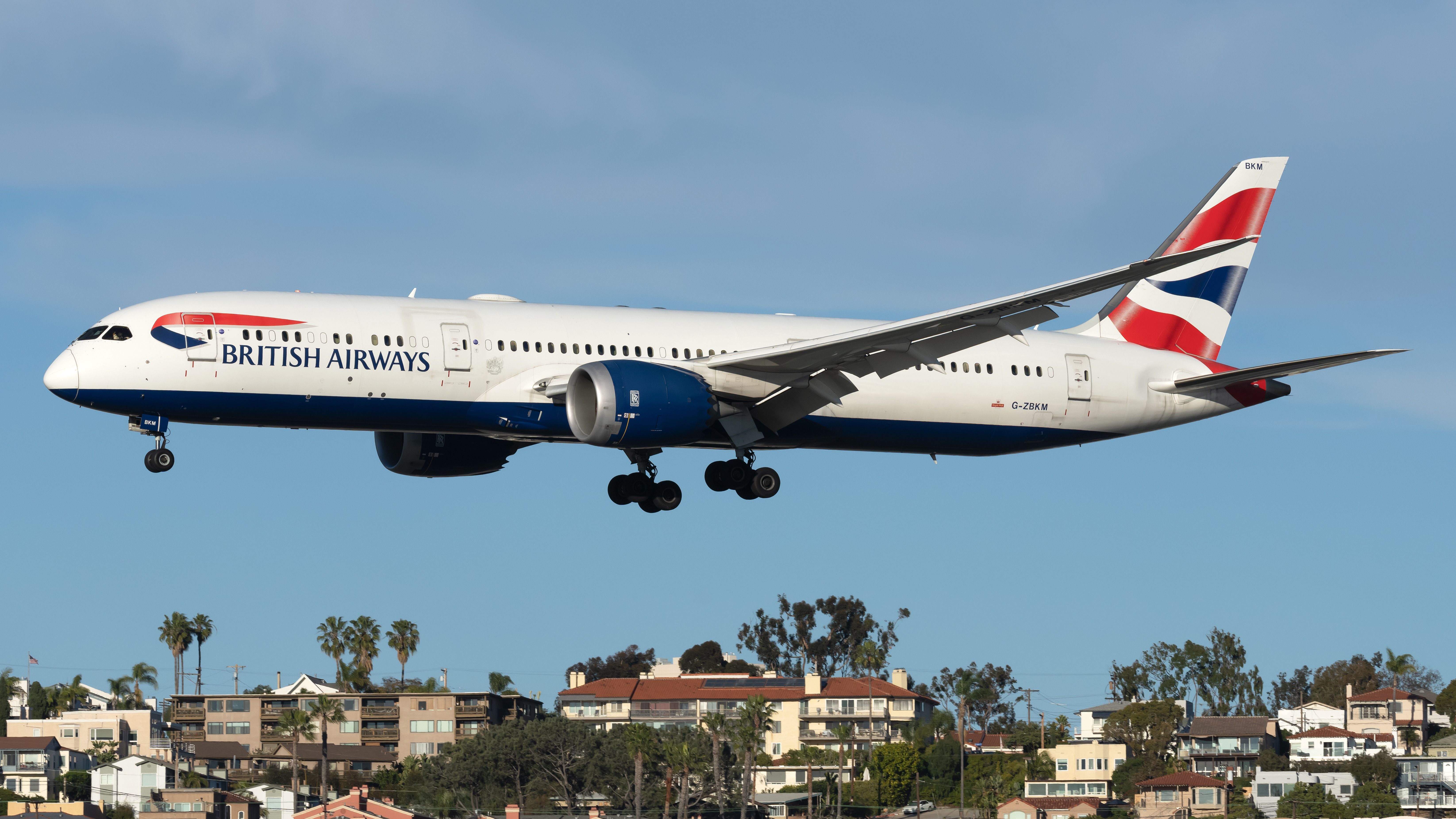British Airways Boeing 787 Diverts To Anchorage Amid Smoke In Cabin
The aircraft was reportedly delayed more than 30 hours. British Airways flight from Tokyo to London diverted to Anchorage, Alaska, due to smoke in the cabin. The Boeing 787-9 Dreamliner was about seven hours into its flight when the incident occurred. An electronic device reportedly caused the smoke, prompting the crew to declare that the situation was urgent but not life-threatening. The aircraft reached London the following day. The crew declared a PAN PAN, a term used to describe an urgent situation but not an emergency, which is short for assistance. The plane landed safely at Anchorage at 01:21 and continued its journey to Toronto Pearson International Airport (YYZ).

发表 : 2年前 经过 Channing Reid 在 Travel
A British Airways flight from Tokyo to London earlier this month diverted to Anchorage, Alaska, due to smoke in the cabin. The aircraft, a Boeing 787-9 Dreamliner, was about seven hours into its flight when the incident occurred.
An electronic device reportedly caused the smoke, prompting the crew to declare that the situation was urgent but not life-threatening. The aircraft reached London, but it was not until the following day.
According to The Aviation Herald, BA8 was operated by G-ZBKN, originating at Haneda Airport in Tokyo on October 1, 2023. The aircraft was scheduled to depart from gate 146 at 08:50 but pushed back nine minutes late at 08:59, according to FlightAware. BA8 taxied to Runway 16L and was airborne at 09:20. Flight data from Flightradar24.com shows that G-ZBKN took off over Tokyo Bay and turned north toward Shimotsuke before heading east over the Pacific.
30 minutes into the flight, the 787 was at its initial cruising altitude of 35,000 feet, traveling at 635 miles per hour. Once over Alaska, about five hours later, the plane increased its altitude to 37,000 feet and flew between 560 and 580 miles per hour. Following its flight path, the aircraft headed further north was flying over the southern area of the Beaufort Sea. Just past seven hours into the journey, flight data shows the plane making a U-turn and was headed back over land.
The aircraft was reportedly 680 nautical miles northeast of Anchorage when the crew declared a PAN PAN, which is a term used to describe an urgent situation but not an emergency. According to The Aviation Herald, the Canadian TSB said the 787 “experienced smoke in the cabin due to a portable device (phone) being stuck down the side of a passenger seat. The cabin was vented, and a Pan Pan was declared.”
PAN PAN, short for “possible assistance needed,” differs from a mayday call. While both situations are urgent, a mayday implies that the issue threatens life, such as a fire onboard, loss of flight controls, certain medical complications with the pilots, or other serious emergencies.
G-ZBKN remained at 37,000 feet for about an hour and a half before descending toward Anchorage. The aircraft flew past Fairbanks to the south and the north of Delta Junction, and then started to descend around eight hours, 35 minutes into the flight. The Dreamliner approached Ted Stevens International Airport (ANC) from the northeast and continued to decrease altitude. At around 3,000 feet, the plane was over Chickaloon Bay and turned to line up for its final approach on Runway 7R. G-ZBKN landed safely at ANC at 01:21.
The aircraft stayed on the ground at ANC for nearly four hours but departed to continue its journey just before 05:00. Rather than flying directly to London, the plane flew five hours to Toronto Pearson International Airport (YYZ) and arrived around 14:00.
It was not until the following day, on October 2nd when G-ZBKN departed to London. However, the aircraft flew under a different flight number. BA9605 left YYZ around 13:15 and arrived at London Heathrow Airport at 12:33 on October 3rd, more than 30 hours after its scheduled arrival time as BA8, according to The Aviation Herald.
话题: Aviation, Airlines, Boeing, Alaska, Anchorage, British Airways
